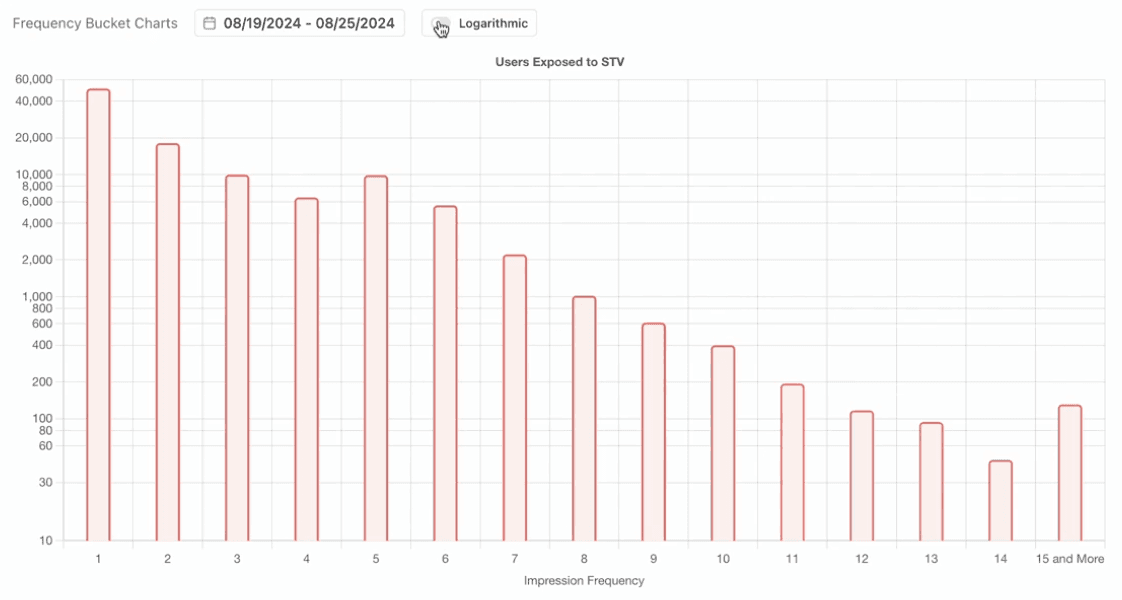October 9, 2024
5 min
It’s time to shift your thinking about how to approach ad frequency. Frequency is often considered a simple control—a cap limiting how frequently a user is exposed to an ad. Not wanting to overwhelm customers with ad fatigue or “waste” ad spend, and impressions on a user who’s already viewed the ad, frequency is often considered a guardrail.
While some agencies and technology partners have started leveraging AMC to optimize frequency in its current state as a cap, we—at Gigi—believe in using frequency as a strategic lever instead.
Why Ad Frequency is so much more than just a cap
Linear television ads are often measured on reach and “frequency.” In this instance, frequency is used as an output metric. It is treated as though the ultimate frequency of a campaign is the end when it really is a means to an end…with the real end being business outcomes.
There is a tacit acknowledgement within TV advertising - and marketing more broadly - that consumers need multiple touchpoints with a brand to drive business outcomes. Concepts like the “rule of 7” suggest that it takes 7 to 10 interactions with a brand before a person is ready to make a purchase. Our data shows that consumers take an average of 28 days to convert on Amazon or a first-party channel after seeing a Streaming TV ad for the first time. So marketers know they cannot rely on a single impression to leave a mark. Streaming TV requires sustained engagement to keep viewers moving down the purchase path. It’s not about limiting impressions but strategically planning the cadence and timing of exposures to ensure your brand message sticks.
Frequency should be more than just a defence mechanism; finding the optimal number of exposures to drive increased outcomes strengthens a brand’s narrative and guides customers to that eventual purchase. It’s no longer about just “touching” the customer with your message; you must engage with them. This often requires multiple touchpoints across various stages of the customer journey, with each exposure playing a role in shifting perceptions, deepening consideration, and ultimately driving action. Frequency ensures key messages are consistently reinforced and your brand remains top of mind when used correctly.
Frequency as a strategic lever
Today we’re excited to announce a suite of features that will change the frequency conversation. This suite consists of two primary building blocks:
The ability to set a target frequency for your Streaming TV strategy, leveraging Amazon DSP’s newest capabilities with goal-based bidding; and
A set of reports and analytics to understand the optimal frequency you want to strategically set to drive desired business outcomes.
For example, one of our customers was looking to acquire new customers by driving brand awareness. By analyzing customer behavior with Gigi’s frequency reporting, they discovered that customers who viewed an ad 5-9 times within a 30-day period were 1.4 times more likely to land on the Product Detail Page than those who saw the ad less frequently. Using these insights, they optimized their Prime Day campaigns towards that 5-9 ad frequency cadence, helping drive a 120.9% higher purchase rate and a 107.7% higher conversion rate for their Sponsored Ads. Rather than capping their ad exposure, the brand used frequency to target a specific window of engagement that drove tangible results for their downstream outcomes.
How to optimize for Ad Frequency with Gigi
Gigi’s Frequency Reporting offers marketers insights into how frequency impacts critical business outcomes like Detail Page View Rate (DPVR) and Purchase Rate (across both Amazon and first-party channels) so you can find the optimal frequency bucket to drive increased campaign performance.
You can easily measure the unique users exposed to a Streaming TV ad bucketed by ad frequency and then visualize the impact of these frequencies against DPVR and Purchase Rate. In doing so, marketers can better understand when users are becoming aware of and engaging with their brand and how this ultimately impacts their sales.


As early adopters of Amazon’s goal-based bidding beta for target frequency optimization on the Amazon DSP, marketers can easily express their target weekly frequency directly in Gigi, enabling Amazon DSP machine learning capabilities to optimize toward their goals.
Best Practices for Frequency Targeting
Frequency is optimized weekly, meaning if your frequency cadence is set as 5 you are optimizing towards 5 times per week
We recommend setting your actual target frequency around 2x higher than your desired frequency to ensure you hit your minimum frequency
your “at-target-rate” is the percentage of users that have a frequency within the frequency target (+/-1)
Ultimately, by shifting perspective on frequency from a limiting factor to a strategic lever, marketers can leverage frequency to drive deeper engagement with shoppers and ultimately convert them to purchase.
Please complete the form below to learn more about using ad frequency as a strategic lever and optimizing your campaigns in Gigi.
